Surface Pro 4 review: hands down the best Windows 10 tablet yet
Microsoft's latest tablet is portable, powerful and very pretty


-
+
Size and weight
-
+
Display
-
+
Type Cover
-
-
Type cover sold seperately
-
-
Intel Core m3 at entry level
-
-
Scuffs easily
Why you can trust T3
The Surface Pro 4 isn't wildly different to the Surface Pro 3. Its design is similar, it runs full-fat Windows desktop programs and once again converts from a tablet into a laptop thanks to its detachable keyboard. So how does it manage to be much better? Simple: Microsoft made lots of subtle refinements that the make the Surface Pro 4 easier to use, more fun and closer than ever before to being a full-on laptop replacement.
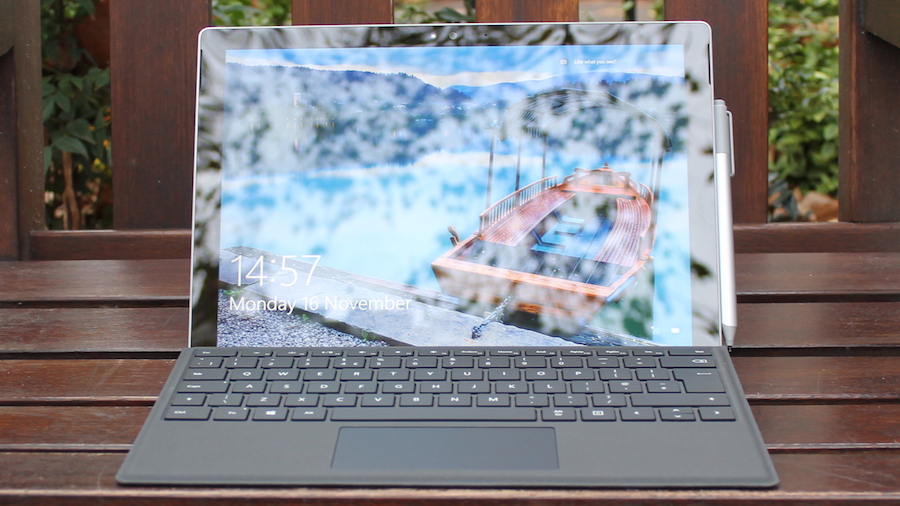
If you're looking for a budget tablet, the Surface Pro 4 isn't it. Coughing up £1,909 fetches you the top-end Surface Pro 4 kitted out with all the bells and whistles (including the new £110 Surface Pro 4 keyboard). Meanwhile, the cheapest model, which houses Intel's Core M processor, starts at £749 (£859 including a keyboard). That places it in the same ballpark as HP's similarly luxurious Spectre X2, which starts at £849.99.
If you're seeking more bang for your buck, Microsoft's Surface 3 (£509 with a keyboard) and Lenovo's upcoming IdeaPad Miix 700 (expected to launch at around £500) are two wallet-friendly convertibles cut from a similar cloth as the Surface Pro 4.
Design
Microsoft decided to refine the Surface Pro 3's design rather than change it completely. The Surface Pro 4's sturdy magnesium-alloy chassis makes it unmistakably a Surface device, only this time around it's thinner (8.4mm versus 9.1mm), lighter (1.73 pounds versus 2.4 pounds) and features a silver Microsoft logo on the back rather than the Surface logo. It's a silver slate that'll send your magpie tendencies into overdrive — just don't expect its front side to remain free of fingerprints for too long.
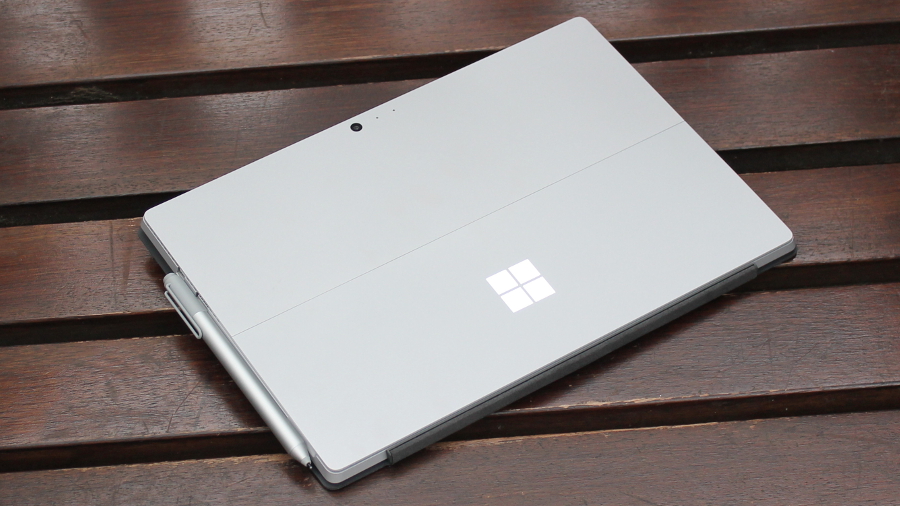
The Surface Pro 4's subtle taper means it sits comfortably in your hands wherever you grip it, making it ideal for reading websites or apps on the sharp display, which once again benefits from having an A4 paper-like 3:2 aspect ratio. Microsoft slimmed down the display's bezels to the point where you can grip the sides without obscuring the edges of the screen when holding it like a tablet.
Shrinking the bezels down also allowed Microsoft to raise the size of the display from 12 to 12.3 inches while also upping the pixel-resolution from 2,160 x 1,440 to 2,736 x 1,824. At 267 PPI (versus the Surface Pro 3's 216 PPI), the Surface Pro 4 has the sharpest display of any Windows tablet out there. It's also searingly bright, to the point where I had to set to brightness to around 75% in a darkened room to prevent Live Tiles from being burned into my retinas. It's easily bright enough for outdoor use, where the screen's highly reflective nature is most likely to cause problems.
It's only just behind the new Dell XPS 15 (282.4 PPI), which boasts an Ultra HD 4K display. Set to 200% scaing (the default option), text is crisp and clear on the Surface Pro 4 whether you're typing in documents, looking at menus or reading ebooks.
Get all the latest news, reviews, deals and buying guides on gorgeous tech, home and active products from the T3 experts

There's no flex in the Surface Pro 4's body wherever you prod or poke it, but it's still a slab of metal at the end of the day. And that means one thing: it scuffs on hard concrete, as I found out when it fell off my knee while sat on a bench. While the new Surface Pro 4 keyboard feels much nicer to type on (more on that later), it doesn't make the device any sturdier on your lap, even with the keyboard's magnetic strip attached. If you need a machine that's rock solid on your knees, you're still better off with a traditional clamshell laptop.
Features
As with the Surface Pro 3, Microsoft is aiming its new tablet at digital artists. It has made numerous improvements to the Surface Pen which, at 22 grams, is light in the hand and feels comfortable to use when scribbling and poking at the display. It automatically powers down when not in use to conserve power, and Microsoft claims that it lasts up to a year on a single battery charge.
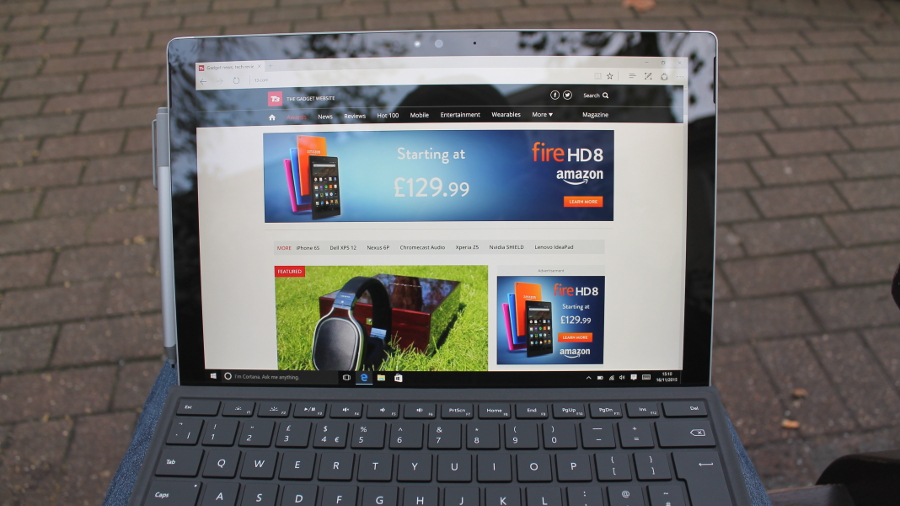
Microsoft has also upped the Pen's sensitivity from 256 to 1,024 levels of pressure. At the same time it has reduced the gap between the sensors under the Surface 4's display and the glass panel above it. Microsoft calls the technology "PixelSense", and it makes writing or drawing with the pen feel more natural. Handily, the new Surface Pen clips to the left-hand side of the display magnetically for storing away when not in use.
The Surface Pro 4's ports include one USB 3.0 port, DisplayPort, a microSD card reader and a headphone/mic combo jack. Communication options include 802.11ac Wi-Fi and Bluetooth 3.0.
Performance
Microsoft is offering the Surface Pro 4 in six different configurations, depending on how much power you need under the bonnet. At the lower end it comes with Intel's Core m3 processor, a passively-cooled Skylake CPU that's less powerful the Core i5 and Core i7 chips inside the more expensive Surface Pro 4 models. Core m3's benefits from featuring no mechanical parts and runs whisper quiet, while being marginally thinner.
The model supplied to T3 for review ran the 64-bit version of Windows 10 and housed an Intel Core i5-6300U backed up by 8GB (configurable up to 16GB) of DDR3 memory, paired with a 256GB SSD (configurable up to 512GB) for storage and Intel HD 520 graphics.
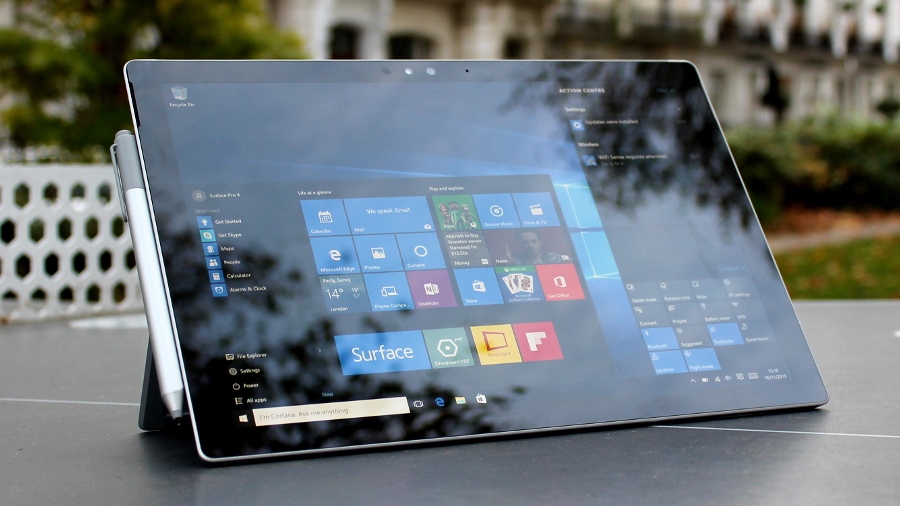
It was difficult to really push the Surface Pro 4 by opening programs and apps on the desktop. I launched two separate browsers and opened around 25 tabs in each, alongside the Skype desktop client and the Kindle app. The Surface Pro 4 showed no signs of slowdown, and with everything open it still managed to resize a 70MP image down to 900 pixels wide in just a few seconds. A low hum as the processor crunched through its calculations was the only sign that the device was under any pressure.
One huge advantage the Surface Pro 4 has over tablets such as Apple's iPad Pro is that you can play proper desktop games on it, in addition to Windows 10 apps. It had no trouble running Halo: Spartan Assault from the Microsoft Store with no slowdown. The Surface Pro 4 is similarly capable of running older Steam games - such as Team Fortress 2 - at the golden 60 FPS mark if you lower the resolution and quality details a few notches. Just don't expect it to run Fallout 4 very well.
The Surface Pro 4's battery life came to just 3 hours and 15 minutes in PC Mark 8's punshing battery life test, but it's capable of much more in a real-life usage scenario. (Think browsing the internet, playing YouTube videos, doing a bit of document editing and playing half an hour of Halo: Spartan Assault.) Not quite the nine hours that Microsoft advertises, mind, instead coming closer to seven hours with the brightness set to 75%.

The Surface Pro 4 features two front-facing speakers capable of pumping out music at fairly high volume, but a lack of bass and mid-range tones means sound is disappointingly tinny. It's best used with a dedicated set of external speakers, which are easy enough to connect using Bluetooth.
Usability
The single biggest improvement to the Surface Pro 4 in terms of usability comes from its new Type Cover keyboard. Thinner, lighter and featuring completely redesigned keys, it turns the Surface Pro 4 from a tablet that you might do a bit of occasional typing on to something that you could use to bash words out on all day long.
Let's not get carried away: it's no ThinkPad keyboard, but the extra travel that its chiclet-spaced keys afford over the mushy, cramped Surface Pro 3 keyboard's keys make for a much more comfortable (and faster) typing experience. The keyboard is once again magnetic and easy to clip onto the Surface Pro 4's underside requiring just enough force to remove so that you don't whip it off accidentally.
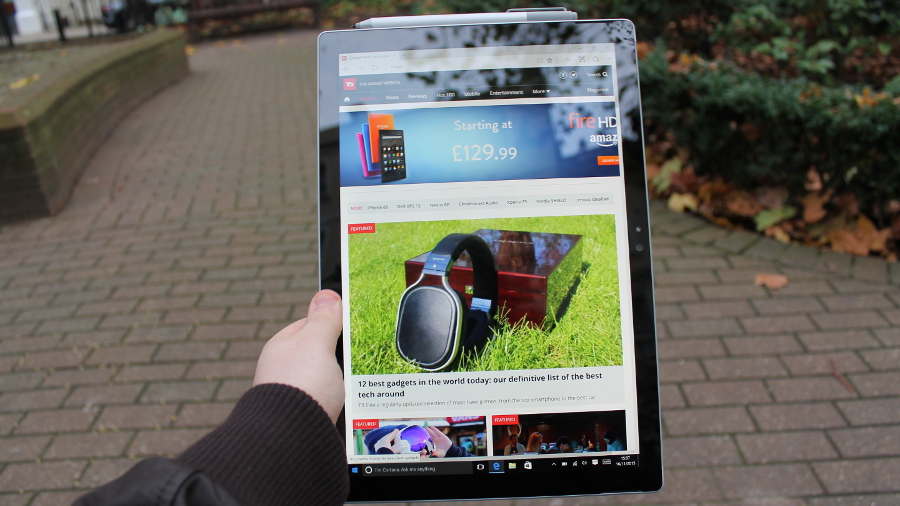
Around the back of the Surface Pro 4 is a multi-position kickstand that lets you interact with the display at varying angles. Using the tablet at a narrower, almost flat angle makes drawing on the display much easier, and it can also be used to avoid glare in bright sunlight.
Windows 10 makes switching between laptop and tablet mode on the Surface Pro 4 much more seamless. That's due to a new Tablet Mode button that's located in the Action Centre's settings area. Swiping in from the right-hand side and giving it a press maximises any open app to fill the whole screen, and changes the Taskbar into a menu that provides shortcuts to a Windows 8.1-style Start Screen, alongside icons for Cortana and Task View.
Of course, Microsoft's latest operating system isn't perfect. There are still many apps that have yet to be optimised for the Surface Pro 4's high-resolution display, meaning fuzzy icons and garbled artifacts are commonplace in older desktop apps when you're using the display at anything above 100% scaling. However, the situation isn't anywhere near as bad as it was a year or two back, and the odd scaling-related mishap doesn't detract from what is a gorgeous display.
T3 final verdict
Even if you don't plan on using the Surface Pro 4 as a tablet, its slim, bag-friendly dimensions, sturdy build quality and bright, pixel-packed screen make it an impressive laptop replacement in its own right. It's not cheap, but you won't mind paying for the keyboard this time around, and for the first time in years Windows 10 makes you feel like you've bought into an operating system that's slowly working out the kinks.
If you are seeking a device to replace your laptop that doubles up as a great tablet, the Surface Pro 4 is fine choice. Unless you need battery life that stretches into the double figures, or a particular app that's not yet available in the Microsoft store (which you can probably download as a desktop app anyway), the Surface Pro 4 should do everything you need it to — and probably more.